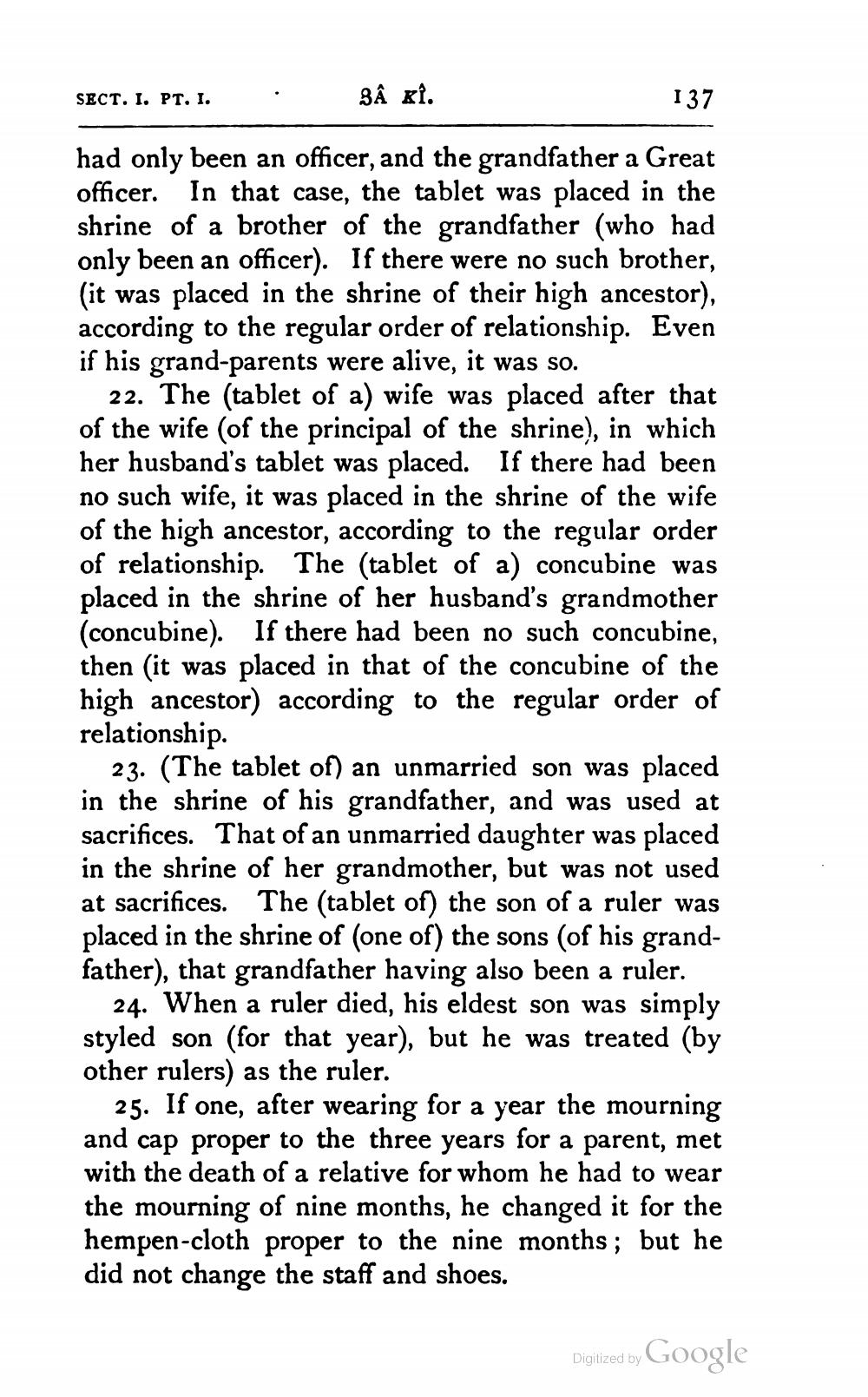________________
SECT. I. PT. I.
137
had only been an officer, and the grandfather a Great officer. In that case, the tablet was placed in the shrine of a brother of the grandfather (who had only been an officer). If there were no such brother, (it was placed in the shrine of their high ancestor), according to the regular order of relationship. Even if his grand-parents were alive, it was so.
22. The (tablet of a) wife was placed after that of the wife (of the principal of the shrine), in which her husband's tablet was placed. If there had been no such wife, it was placed in the shrine of the wife of the high ancestor, according to the regular order of relationship. The (tablet of a) concubine was placed in the shrine of her husband's grandmother (concubine). If there had been no such concubine, then it was placed in that of the concubine of the high ancestor) according to the regular order of relationship.
23. (The tablet of) an unmarried son was placed in the shrine of his grandfather, and was used at sacrifices. That of an unmarried daughter was placed in the shrine of her grandmother, but was not used at sacrifices. The (tablet of) the son of a ruler was placed in the shrine of (one of) the sons (of his grandfather), that grandfather having also been a ruler.
24. When a ruler died, his eldest son was simply styled son (for that year), but he was treated (by other rulers) as the ruler.
25. If one, after wearing for a year the mourning and cap proper to the three years for a parent, met with the death of a relative for whom he had to wear the mourning of nine months, he changed it for the hempen-cloth proper to the nine months; but he did not change the staff and shoes.
Digitized by Google




